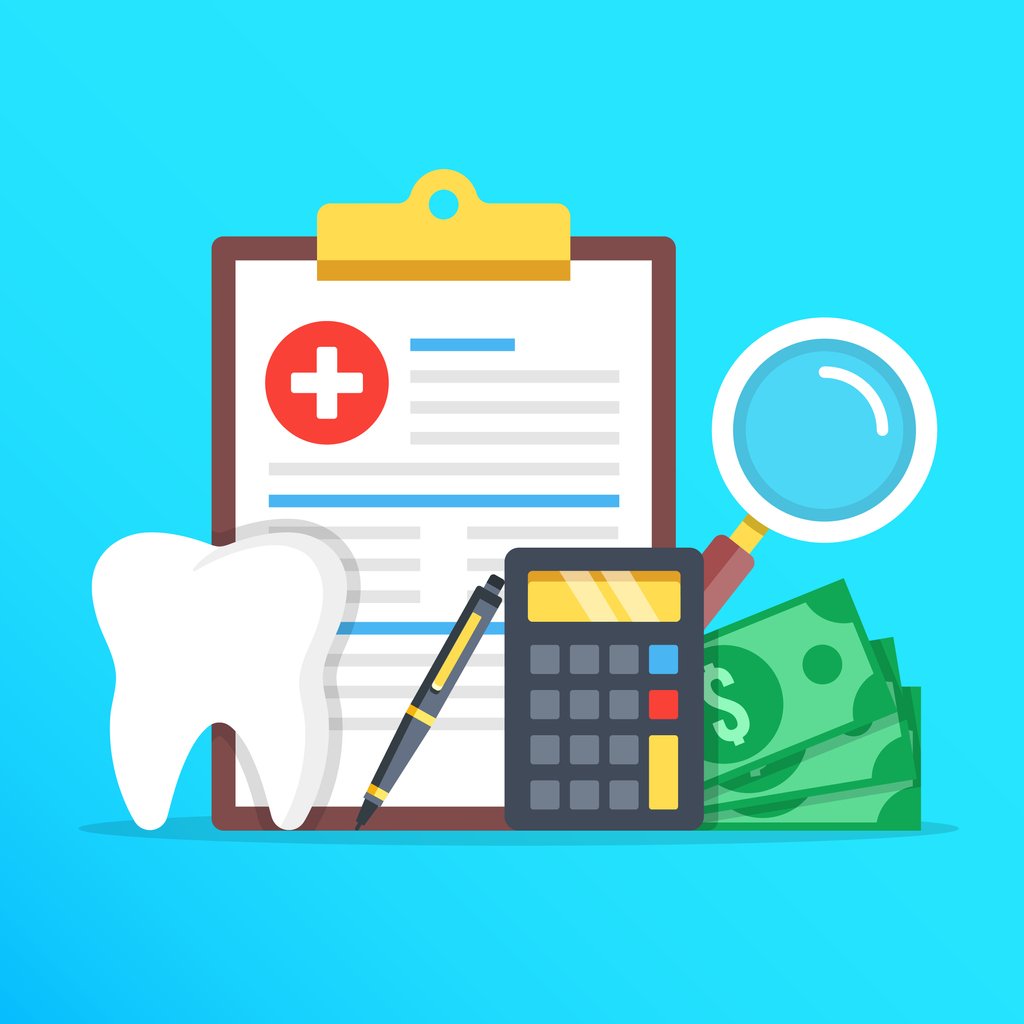September 2023--Should dental offices consider entering into medical insurance billing? Medical billing for dental offices can be tricky.
According to Christine Taxin, the specialists are all getting on board – oral surgery, sleep apnea, temporomandibular, and ortho.
More and more general dentists are as well. Case acceptance increases in dental practices when patients know their out-of-pocket expenses will be lower due to this cross-billing.
Table Of Contents
- What Is The Dental Billing Process?
- Dental Insurance Billing: Medical Billing For Dentists
- How To Do Dental Billing: 3 Tips For Mastering It
What Is The Dental Billing Process?
 Dental billing is all the steps you need to take to get paid by patients and insurance companies for your services.
Dental billing is all the steps you need to take to get paid by patients and insurance companies for your services.
The dental billing process can be broken down into two parts: billing the patient and processing insurance claims. These are your two primary sources of income.
Like any other process, dental billing has clear steps you can follow to make it go smoothly.
Here is a short list of the steps in the billing process for dental work:
1. Getting information from the patient
This is done during the first phone call with the patient when they call to make an appointment at the dentist.
This information will include the following:
- Name
- Phone number
- Address
- Email address
- Contract preferences
- Date of birth
- Name of the subscriber’s employer or insurance plan
- Insurance carrier
- Carrier’s provider phone number
- Insurance ID number
2. Making sure a patient has insurance
Once you have the patient's personal and insurance information, you can call the insurance company or log into your insurance portal to ensure it is correct.
This will show you a complete list of their benefits and tell you how their coverage is doing.
3. Recording dental treatment and code data
As the patient gets care on the day of their appointment, a care team member writes down the important information in your clinical notes and assigns codes to the procedures.
Usually, a member of your admin team ensures this is written down, reviewed, and signed electronically by the provider in your dental software.
A best practice is to have the patient sign off on the day sheet daily to ensure that what happened in the dental chair is recorded in your software and on the patient's ledger so they can be billed.
4. Sending claims and any attachments and keeping track of them
With the information you've put into your software, you can make insurance claims, group them together, and send them in. The claim will include the procedure code, the patient's personal and insurance information, and any needed attachments.
Attachments include clinical notes, x-rays, periodontal charts, narratives, primary EOBs, intraoral photos, and so on.
5. Solving problems with claims that are still open
If your claim was denied or it's been 30 days, and you still haven't been paid, you'll need to check on it. The term for this is "working the insurance aging report."
Your biller gets a list of claims still open, calls the insurance company to find out what went wrong with the claim, and then tries to get it paid by appealing it.
This is a crucial step where the skill and speed of the biller will determine if you have a high collection rate or a low rate with a lot of costs.
6. Charges to patients
Depending on the revenue model you choose, you either charge the patient for the total cost of the procedure upfront (service fee), or you charge the patient the difference between what their insurance should cover and the total cost of the procedure (reimbursement model).
You can get the patient's payment before they leave the dentist's office or ask for it later by mail or email. Then, you file a claim so their insurance will pay you back.
In either case, collecting patient accounts receivable fully is essential because they can make up about half of your income.
7. Posting payments
Once your insurance claim is paid, and the money is in your bank account, you'll need to add the payment to your practice management software.
This makes sure that all of your information is recorded and reported correctly. It also brings an insurance claim to its end, so you can close it. Also, you need to post patient payments quickly so that your patient bills and cash flow numbers are correct.
8. Running important reports like collection reports and reports on how old accounts are
Once the payments are posted and the claim is closed, you can really look at how your billing activities will see how well they are getting paid for what your practice does.
You can run net production and net collection reports on your dental software. Outstanding account and insurance aging reports will show you a list of claims and/or patient balances that need to be taken care of.
Dental Insurance Billing: Medical Billing For Dentists
 Some examples are:
Some examples are:
- Orthodontists billing medical to treat children with sleep apnea
- Oral surgeons and dentists billing medical to restore jaws with bone grafting
- Implant replacement of missing teeth
- CBT scans are billable
- Pregnant women are at increased risk of medical problems due to oral disease
- Diabetics are at increased risk of medical problems due to oral disease
With cross-billing, dentists and periodontal specialists are seeing an increase in referrals from obstetricians and endocrinologists.
Dentists are seeking help from medical specialists for optimal care of their patients. The dental and medical partnership is growing.
How To Do Dental Billing: 3 Tips For Mastering It
By incorporating medical billing into your dental practice, you can:
- Set your practice apart & provide the best patient experience
- Increase monthly case acceptance, volume, & referrals
- Create additional revenue sources for your practice
Here are the first three:
1. Make sure that the dental billing process runs smoothly
The most important thing about your process is how well it works. We talked about how there are a lot of moving parts that need to be done correctly and on time.
Be organized to ensure you take care of every task related to billing, from scheduling patients to posting payments. A dental practice needs a smooth billing system to pay everyone well and stay in business.
By keeping the cost of collecting payments as low as possible, everyone gets the best return on their work.
2. Control costs
Find out how to get rid of the most expensive part of dental billing, which is processing insurance claims. Unfortunately, billing for insurance is often a big reason operating costs go up. Each unpaid claim needs to be checked on.
It's hard to do this, though. Insurance companies that keep you on hold for hours can't keep up with most busy teams. Not only that, but the business world is constantly changing in ways you can't control:
- Federal regulations
- Government rules
- Changes to the CDT codes
- Changes to insurance policies
- Information for patients
- Methods used by insurance companies to refuse, delay, or lower payments
You can either keep an eye on claims, denials, codes and rules, policy updates, and limits, or you can hire a service to do this while you keep an eye on things.
3. Always learn more
Because medicine, insurance policies, no-pay strategies, and rules are constantly changing, dental billers must always be learning.
To run a successful dental practice, you must keep learning new things and finding better ways to do something. Putting money into the education and training of your dental team is an excellent place to start.
Final Thoughts
The steps you need to take to get paid by patients, and insurance companies for your services make up the dental billing process.
There are two parts to the dental billing process: billing the patient and dealing with insurance claims. These are the two main ways you make money.
As with any other process, there are clear steps you can follow to make dental billing go smoothly.
Thanks to this overview, you now have an idea of how the dental billing process works. You can see how a claim goes from beginning to end.
Understanding this can help you stay on track with collecting patient and insurance information and how you work to get paid for your practice through insurance claims and patient payments.
And since you're trying to take your practice to the next level, call tracking can provide you with invaluable data about your patients and what they want.

Subscribe to our blog for the latest updates
By submitting this form you will be receiving our latest updates on post. We're committed to your privacy. Patient Prism uses the information you provide to us to contact you about our relevant content, products, and services. You may unsubscribe from these communications at any time.
- Recent
- Popular










.svg) Share
Share.svg) Tweet
Tweet.svg) Post
Post.svg) Mail
Mail

